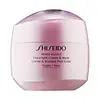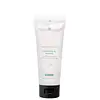What's inside
What's inside
 Key Ingredients
Key Ingredients

 Benefits
Benefits

 Concerns
Concerns

 Ingredients Side-by-side
Ingredients Side-by-side

Water
Skin ConditioningDimethicone
EmollientDipropylene Glycol
HumectantGlycerin
HumectantSd Alcohol 40-B
AstringentHydrogenated Polydecene
EmollientPEG-10 Dimethicone
Skin ConditioningSorbitol
HumectantPEG-150
HumectantPEG-400
Emulsion StabilisingDiisostearyl Malate
EmollientPEG-9 Polydimethylsiloxyethyl Dimethicone
EmulsifyingDisteardimonium Hectorite
StabilisingPEG-20
HumectantTrehalose
HumectantPotassium Methoxysalicylate
BleachingPhenoxyethanol
PreservativePolyvinyl Alcohol
Hydroxyethylcellulose
Emulsion StabilisingButylene Glycol
HumectantTrisodium EDTA
Hdi/Trimethylol Hexyllactone Crosspolymer
Sodium Citrate
BufferingDipotassium Glycyrrhizate
HumectantAlcohol
AntimicrobialParfum
MaskingCaffeine
Skin ConditioningCitric Acid
BufferingSodium Metaphosphate
BufferingPEG/PPG-14/7 Dimethyl Ether
Skin ConditioningPPG-3 Dipivalate
Skin ConditioningLinalool
PerfumingTocopherol
AntioxidantCitronellol
PerfumingSodium Metabisulfite
AntioxidantGeraniol
PerfumingPaeonia Albiflora Root Extract
Skin ConditioningSilica
AbrasiveCI 77491
Cosmetic ColorantAngelica Keiskei Leaf/Stem Extract
Skin ConditioningLimonene
PerfumingCrataegus Monogyna Flower Extract
Skin ConditioningRehmannia Chinensis Root Extract
Skin ConditioningPrunus Yedoensis Leaf Extract
Skin ConditioningZiziphus Jujuba Fruit Extract
Skin ConditioningPyrola Incarnata Extract
Skin ConditioningPotentilla Erecta Root Extract
Skin ConditioningAchillea Millefolium Extract
CleansingBenzoic Acid
MaskingWater, Dimethicone, Dipropylene Glycol, Glycerin, Sd Alcohol 40-B, Hydrogenated Polydecene, PEG-10 Dimethicone, Sorbitol, PEG-150, PEG-400, Diisostearyl Malate, PEG-9 Polydimethylsiloxyethyl Dimethicone, Disteardimonium Hectorite, PEG-20, Trehalose, Potassium Methoxysalicylate, Phenoxyethanol, Polyvinyl Alcohol, Hydroxyethylcellulose, Butylene Glycol, Trisodium EDTA, Hdi/Trimethylol Hexyllactone Crosspolymer, Sodium Citrate, Dipotassium Glycyrrhizate, Alcohol, Parfum, Caffeine, Citric Acid, Sodium Metaphosphate, PEG/PPG-14/7 Dimethyl Ether, PPG-3 Dipivalate, Linalool, Tocopherol, Citronellol, Sodium Metabisulfite, Geraniol, Paeonia Albiflora Root Extract, Silica, CI 77491, Angelica Keiskei Leaf/Stem Extract, Limonene, Crataegus Monogyna Flower Extract, Rehmannia Chinensis Root Extract, Prunus Yedoensis Leaf Extract, Ziziphus Jujuba Fruit Extract, Pyrola Incarnata Extract, Potentilla Erecta Root Extract, Achillea Millefolium Extract, Benzoic Acid
Ingredients Explained
These ingredients are found in both products.
Ingredients higher up in an ingredient list are typically present in a larger amount.
Glycerin is already naturally found in your skin. It helps moisturize and protect your skin.
A study from 2016 found glycerin to be more effective as a humectant than AHAs and hyaluronic acid.
As a humectant, it helps the skin stay hydrated by pulling moisture to your skin. The low molecular weight of glycerin allows it to pull moisture into the deeper layers of your skin.
Hydrated skin improves your skin barrier; Your skin barrier helps protect against irritants and bacteria.
Glycerin has also been found to have antimicrobial and antiviral properties. Due to these properties, glycerin is often used in wound and burn treatments.
In cosmetics, glycerin is usually derived from plants such as soybean or palm. However, it can also be sourced from animals, such as tallow or animal fat.
This ingredient is organic, colorless, odorless, and non-toxic.
Glycerin is the name for this ingredient in American English. British English uses Glycerol/Glycerine.
Learn more about GlycerinPhenoxyethanol is a preservative that has germicide, antimicrobial, and aromatic properties. Studies show that phenoxyethanol can prevent microbial growth. By itself, it has a scent that is similar to that of a rose.
It's often used in formulations along with Caprylyl Glycol to preserve the shelf life of products.
Trehalose is a disaccharide made of two glucose molecules (glucose is sugar!). Trehalose is used to help moisturize skin. It also has antioxidant properties.
As a humectant, trehalose helps draw moisture from the air to your skin. This helps keep your skin hydrated.
Due to its antioxidant properties, trehalose may help with signs of aging. Antioxidants help fight free-radical molecules, unstable molecules that may damage your skin.
In medicine, trehalose and hyaluronic acid are used to help treat dry eyes.
Some animals, plants, and bacteria create trehalose as a source of energy to survive freeze or lack of water.
Learn more about TrehaloseWater. It's the most common cosmetic ingredient of all. You'll usually see it at the top of ingredient lists, meaning that it makes up the largest part of the product.
So why is it so popular? Water most often acts as a solvent - this means that it helps dissolve other ingredients into the formulation.
You'll also recognize water as that liquid we all need to stay alive. If you see this, drink a glass of water. Stay hydrated!
Learn more about Water